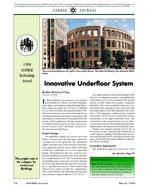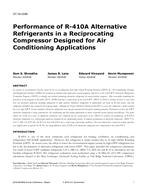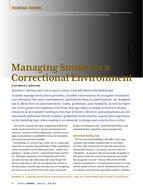Click here to purchase
Envelope air leakage tests on new residential buildings are becoming more common in the United States as state energy codes and energy efficiency programs add testing requirements. Tests on multifamily buildings often focus on individual units. This can help quantify unit compartmentalization, but it ignores leakage from common areas that is captured in whole building tests. This paper provides results of U.S. Department of Energy funded research that includes measurements of whole building exterior leakage for 20 common-entry, low-rise multifamily buildings in six states built between 2017 – 2019. The common-entry buildings were predominantly three-story buildings with 10 or more units and only residential (i.e., not mixed use). Guarded test measurements of exterior leakage on a representative sample of 10 or 12 units were used to estimate the exterior leakage of the building’s common areas. The residential portion of each building’s exterior envelope surface area accounted for 55% to 96% of the total and averaged 78%. The common area exterior leakage was greater than that for the residential units of 17 (85%) buildings. For seven (35%) of the buildings, the common area leakage was more than two times greater than that of the residential units, and on average the common area leakage was 76% greater than that of the residential units. In addition, the common area portion of each building’s exterior leakage accounted for 8% to 54% of the total and averaged 29%. For six (30%) of the buildings, the common area accounted for 40% or more of the whole building’s leakage. Even though the common space exterior wall construction was usually similar to that of the units, it was suggested that there may have been more attention paid to sealing in the units because they would receive compartmentalization testing.
Product Details
- Published:
- 2022
- Number of Pages:
- 9
- Units of Measure:
- Dual
- Product Code(s):
- DBldgsXV-C023


